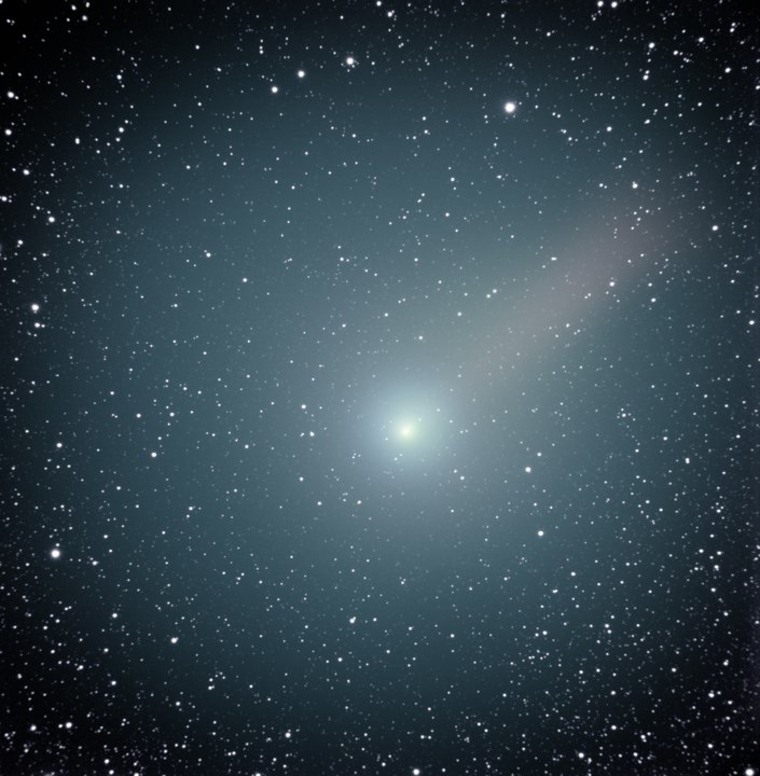Comet Hartley 2's close approach to Earth wasn't as spectacular as some might have expected, but the real show should come in a couple of weeks, when NASA sends a spacecraft past Hartley 2 for some ultra-close-ups.
Skywatchers had been hoping that the comet would become bright enough to see with the naked eye by the time it zoomed past Earth. But even at its closest -- 11.2 million miles as of 8 a.m. ET Wednesday -- you would have needed a pair of binoculars to get a decent view.
Seeing Hartley 2 is even more challenging now that the moon is getting close to full. "Glaring moonlight will make the comet difficult to observe for the next week at least," SpaceWeather.com's Tony Phillips writes. The fact that the comet is so close to Earth isn't necessarily an advantage. That just means the comet's glow is spread out over a wider area of the sky.
What's more, the comet hasn't developed a dramatic tail ...yet. You can just make out a tail of streaming reddish dust in the photo above, captured by British astrophotographer Nick Howes early today. As the comet nears its closest approach to the sun on Oct. 28, it may well develop a more prominent tail.
But the best view of Hartley 2 is likely to come just before 10 a.m. ET Nov. 4, when NASA's DIXI/EPOXI spacecraft is due to pass within 450 miles (700 kilometers) of the comet's nucleus. There'll be tons of observations made between now and the big day, as outlined in the EPOXI team's schedule of events.
For the latest comet imagery, keep tabs on the EPOXI Facebook page -- and watch for more from the EPOXI website in the days leading up to this year's coolest cometary close encounter.
Bonus round:SpaceWeather.com explains why Hartley 2 has that green glow. It's because the jets spewing out from the comet's nucleus contain cyanogen, a poisonous gas found in many comets, as well as diatomic carbon (C2). Both substances glow green when illuminated by sunlight. The reddish color of the tail is due to sunlight reflected by the dust streaming from the nucleus. Click the links on SpaceWeather.com's webpage for more views of the comet from around the world.
More about comets:
- Flash interactive: Inside a comet
- Halley's Comet sparks meteor shower
- Comet may not have rocked the Stone Age
Connect with the Cosmic Log community by "liking" the log's Facebook page or following @b0yle on Twitter. You can also check out "The Case for Pluto," Alan's book about the controversial dwarf planet and the search for new worlds.
